In reality a very small proportion of bills are passed
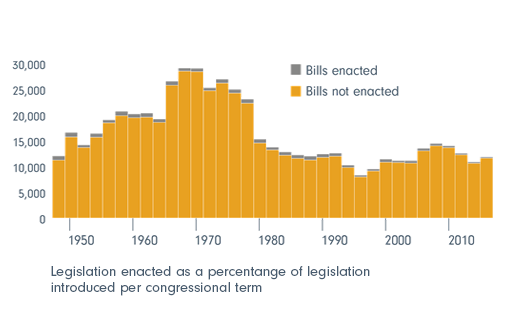
Source www.govtrack.us: Fidelity International. November 2016
Not only that, but enacted bills have also generally been a shrinking fraction of all bills proposed in the last 30 years. In fact, the current congressional term looks on course to record the lowest number of bills ever passed.
The proportion of bills being passed is in decline
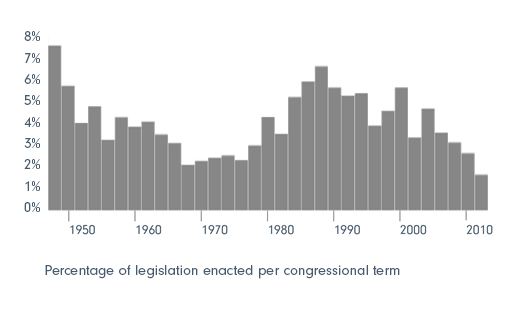
Source: www.govtrack.us: Fidelity International. November 2016
Surprisingly, there is no clear positive link between the number of enacted bills and the degree of party congressional control. In Obama’s first (two-year) congressional term the Democrats controlled both houses, yet significantly fewer laws were passed in this term than in the preceding one under George W Bush, who had to contend with an unaligned Congress.
Congressional control not correlated with number of laws passed
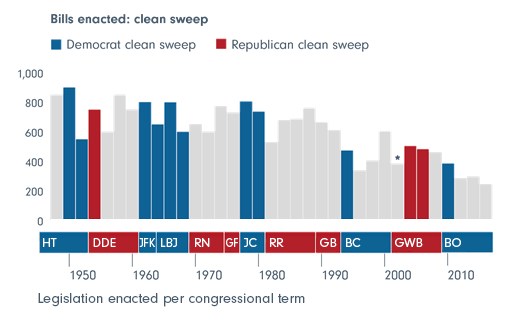
Source: www.govtrack.us: Fidelity International. November 2016
Passing any polarising legislation typically requires a senate ‘supermajority’. A simple majority (> 50%) gets a bill through the House of Representatives, but to avoid an opposition ‘filibuster’, a supermajority of 60 votes is needed in the Senate. The graphic below shows that such instances of presidential alignment with both houses and a Senate supermajority are rare.
Laws passed in Senate supermajority periods
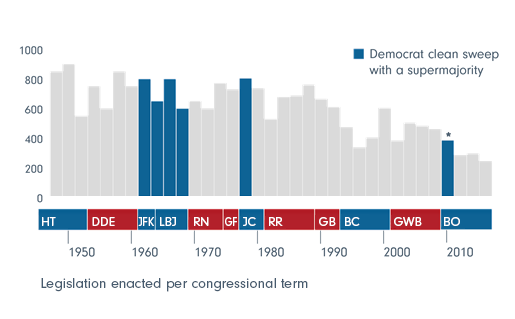
Source: www.govtrack.us. Fidelity International. November 2016
Remarkably, Obamacare is the only major law to be passed in the face of 100% opposition from opposing party members in both houses. What made this highly divisive legislation possible was not just a simple majority in both houses (something Trump also has) but, crucially, an effective senate ‘supermajority’ (something Trump does not have), thanks to the support of two independent senators and a Republican senator’s decision to switch parties mid-session.
Changes in composition for incoming 115th US Congress
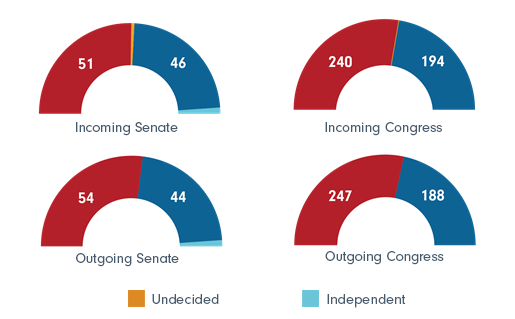
Source: www.govtrack.us: Fidelity International. November 2016
With just 51 Republicans (or 52 if they win the Louisiana run-off in December), the incoming Senate majority is slim. It’s also worth bearing in mind that Trump has failed to earn the full support of the entire party. Political commentator Nate Silver estimates there could be 5–10 Republican Senators who defect, blocking him from confirming his cabinet, making successful Supreme Court appointments, or passing new pieces of legislation.
